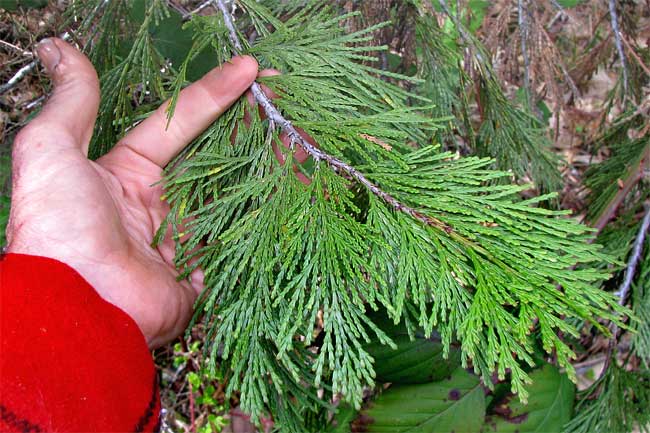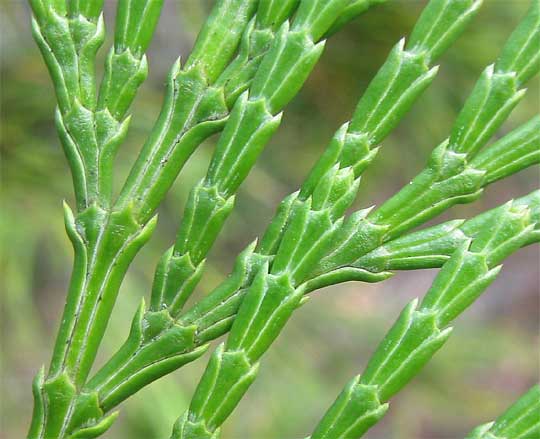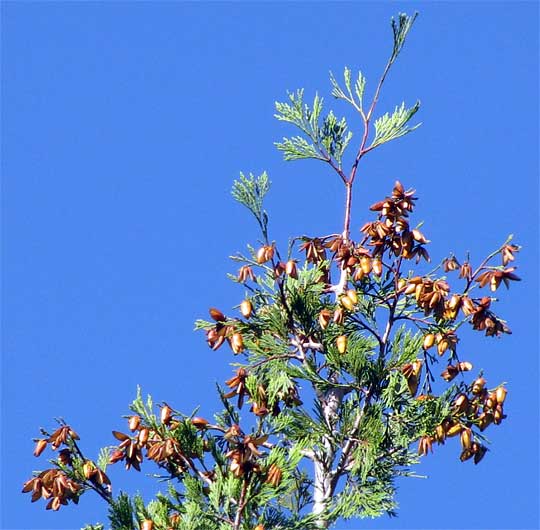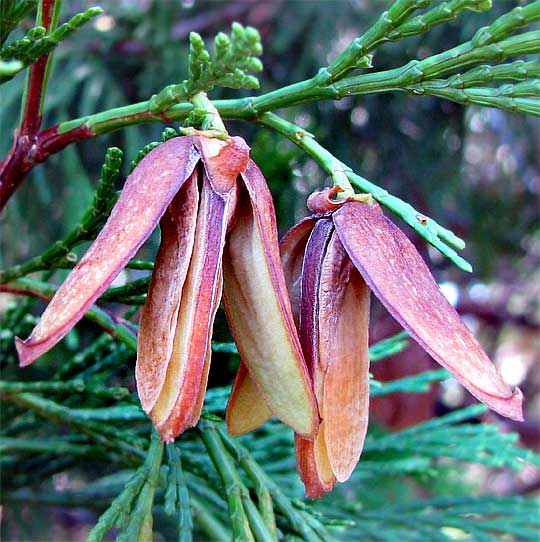Excerpts from Jim Conrad's
Naturalist Newsletter

from the the April 13, 2009 Newsletter, issued from Siskiyou National Forest west of Grants Pass, Oregon:
INCENSE-CEDAR
Around my trailer one of the largest, most conspicuous and handsome conifers is the California Incense-cedar, CALOCEDRUS DECURRENS, a member of the Cypress Family, the Cupressaceae. Incense-cedars reach 150 feet tall (45 m) and more so these are big trees. In general form they're like many other conifers, having a massive, straight central trunk with fairly short branches projecting out more or less at right angles. Up close the tree's branchlets show the interesting and fairly distinctive feature shown above.
The branchlets look like those of a juniper or red- cedar, except that they are flattened. You may have seen similarly flattened branchlets on the shrubs and trees much used in landscaping known as Arborvitae, genus Thuja, who are members of this same family.
In the Cypress Family, instead of leaves or needles, plants bear scale-like leaves easier to show than to describe. You can see the incense-cedar's below:
 .
.
California Incense-cedars are robust and aggressive here. In my friends' flower garden, they're the main weed-tree coming up in any neglected corner. Along the sides of narrow timber roads through the forest sometimes they create green walls, outcompeting other species for light the roads let in.
California Incense-cedar's wood is soft, moderately decay-resistant, and produces a strong, spicy-resinous fragrance. The odor of its wood might evoke strong associations because the wood is the main one used for wooden pencils because of its softness and ability to sharpen easily without splintering. One reason the species is often planted in cool summer climates is its drought tolerance.
California Incense-cedars are distributed from central western Oregon through most of California and the extreme west of Nevada, into northwestern Mexico.
from the September 13, 2009 Newsletter, issued from Siskiyou National Forest west of Grants Pass, Oregon:
INCENSE-CEDAR DROPPING SEEDS
For the last month or so our Incense-Cedars have been covered with curiously shaped, 1.2-inch-long, branch- tip cones. At first they were green but now they're brown and are splitting, releasing seeds. You can see how abundantly they cluster atop a tree by my trailer below:

The cones are very unlike pine cones, which bear numerous woody scales stacked atop one another, each scale producing a seed. Incense-cedar cones just have two seed-producing scales, and each scale's seed resembles a winged maple samara. Two splitting cones with papery-winged seeds loosely held inside them are shown below:
